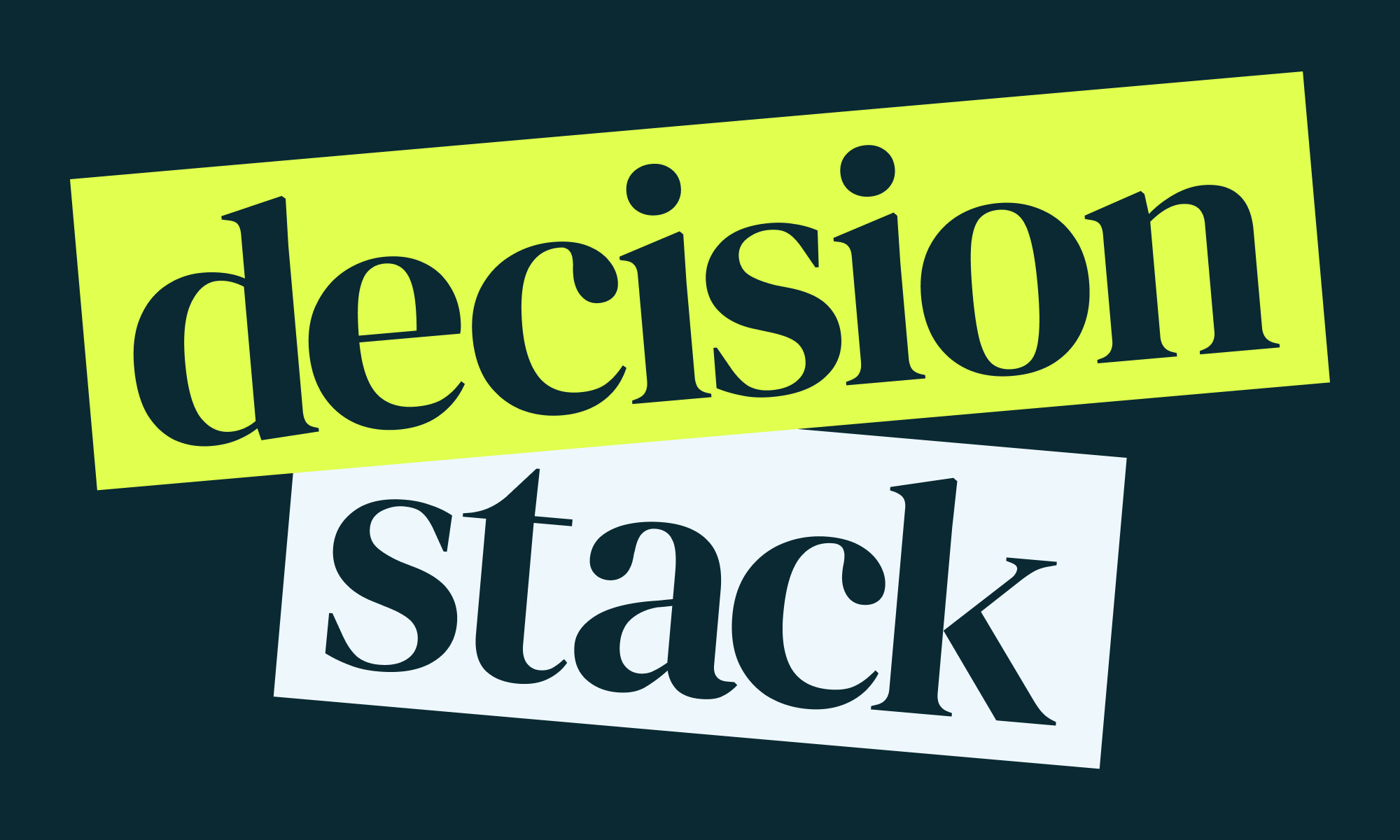What is the Decision Stack?
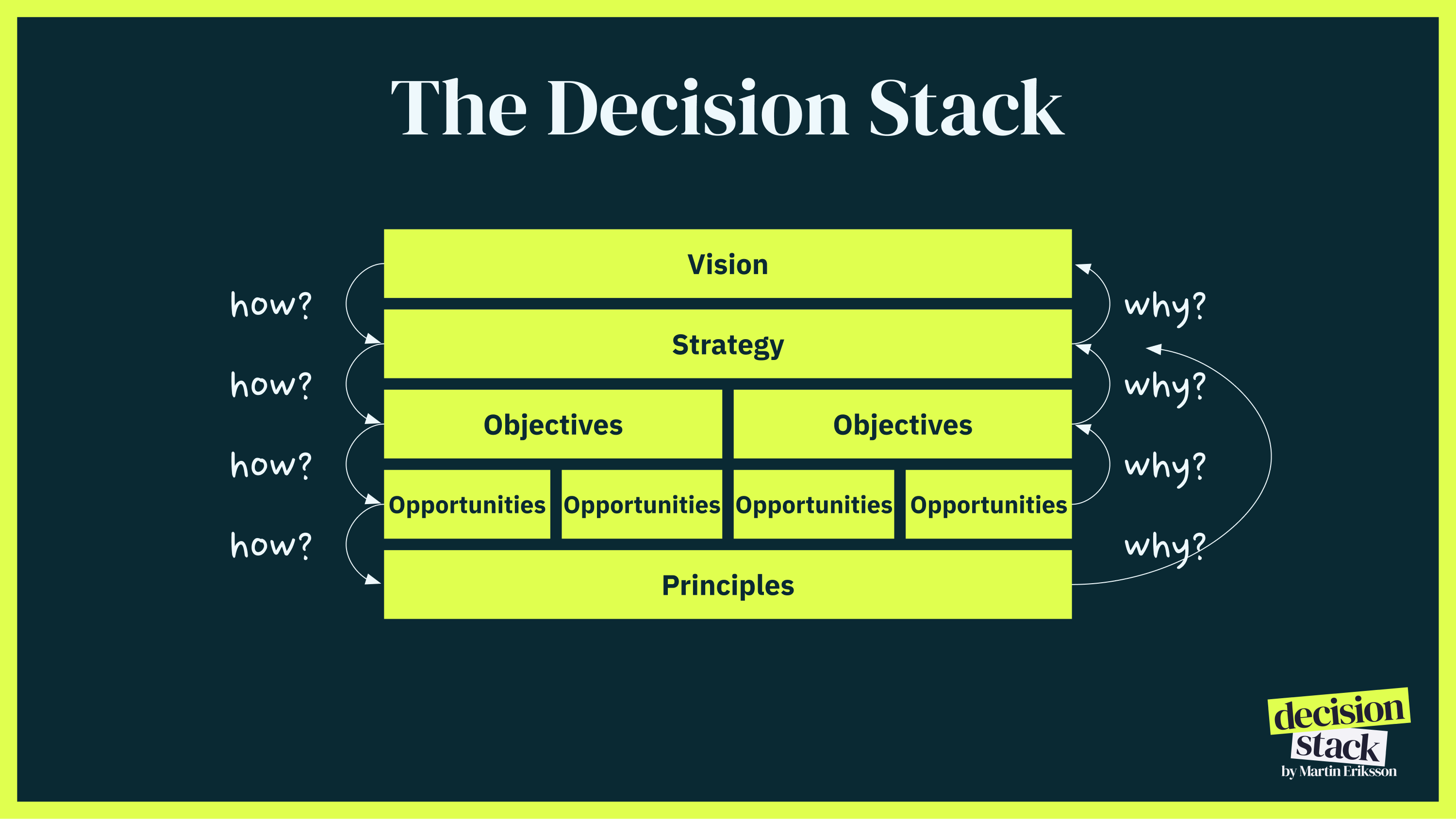
In a world of ever-growing complexity, where startups struggle to keep everyone on the same page and scaleups struggle to move fast enough, empowering small cross-functional teams with the autonomy to make decisions themselves is the only way to succeed. (Don’t believe me? Read my first book) Yet the thousands of decisions made at every level by our teams still need direction. They still need alignment. They still need context.
Every decision is a trade-off, and deciding what not to do is just as important as deciding what to do. The role of the leader (at every level) is therefore to empower your teams while providing the context necessary for aligned, high quality, and high velocity decision making.
The best way to ensure this alignment comes from having a clear consistent thread through every step of what I call the Decision Stack: connecting the dots from through to every single daily decision. These decisions come from 5 simple questions:
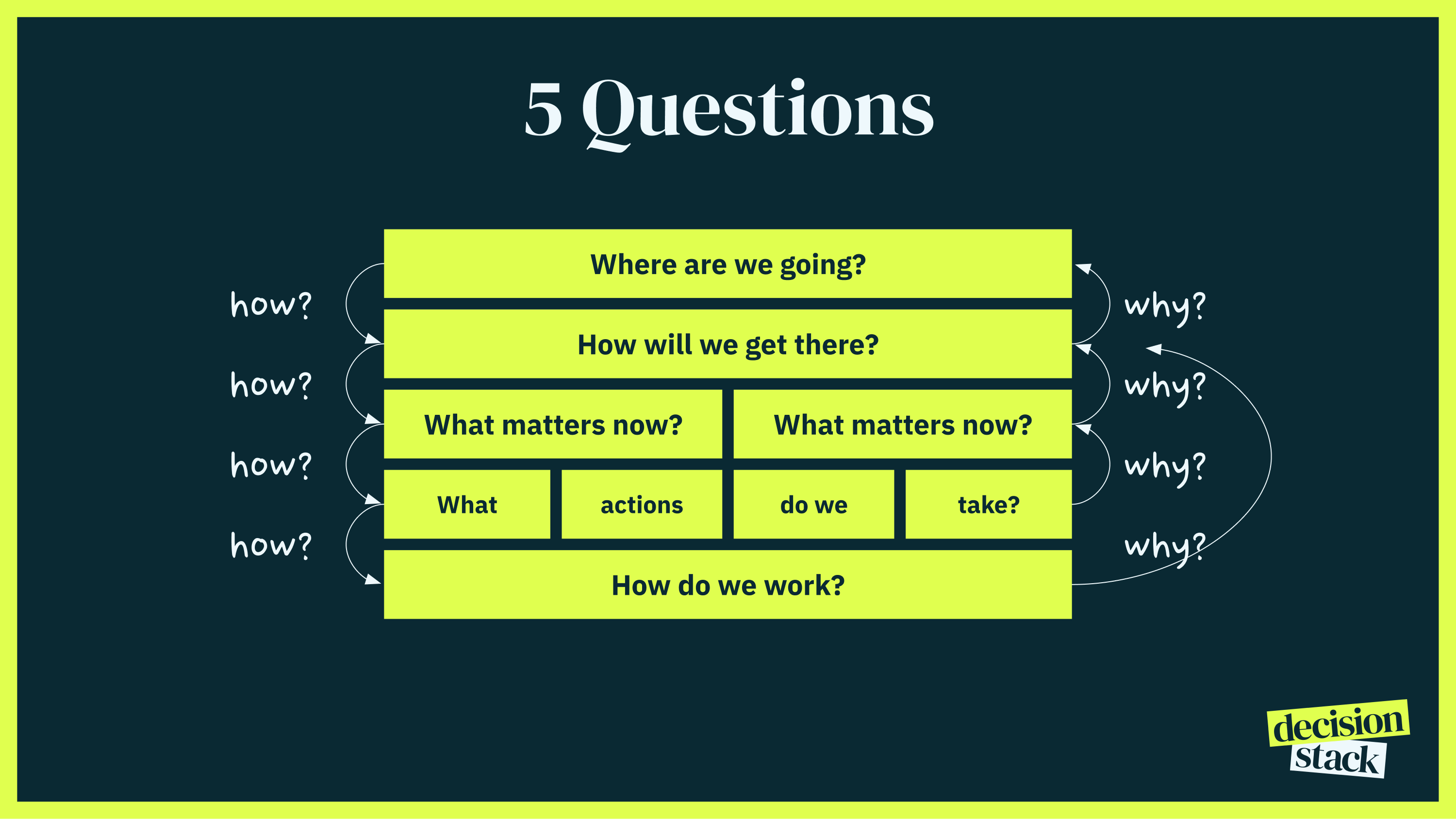
- Where are we going?
- How will we get there?
- What matters right now on that journey?
- What actions do we take to move forward?
- How do we do the work?
I developed this mental model after years of building, scaling, and advising hundreds of companies as a founder, serial Chief Product Officer, author, Product Partner at one of the world’s largest private investors, and now advisor to startups and scaleups. It’s a simple way to build your strategic thinking muscle, drive clarity and focus at every level of your organisation, and improve both the velocity and quality of decisions in your organisation.
The Decision Stack from top to bottom asks “How are we going to do this?” but just as importantly from bottom to top answers “Why are we doing this?” making the Decision Stack just as valuable for individual team members as it is for leaders.
How you answer the questions is less important than making sure you have answers. I like to answer them using Vision and Mission, Strategy, Objectives (and Key Results), Opportunities, and Principles. You might like different ways to answer the same questions, and that's ok - this is a mental model not a rigid framework.
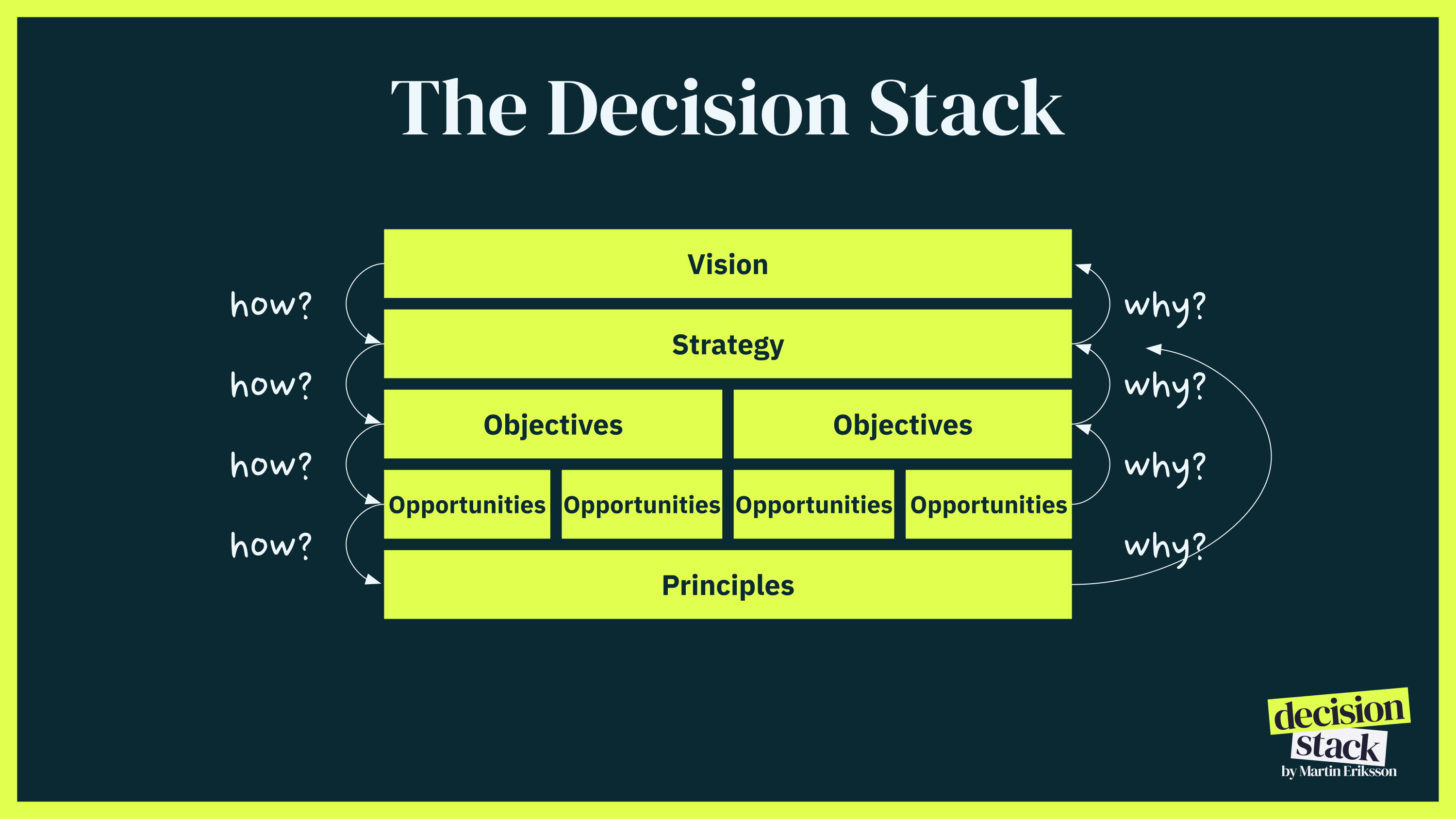
Vision / Mission
“We need missionaries, not mercenaries” – John Doerr, Kleiner Perkins
Whether you call it mission or vision, separate them or combine them, every successful business needs a clear sense of where they’re going and why that matters. A strong mission will motivate you, your team, and your customers more than anything else.
I can sense some eye-rolling here as we’ve all been through terrible vision exercises and suffered under fluffy, generic mission statements but there is a good way to do this, and it’s incredibly worthwhile.
What unites all those terrible visions and missions?
- cookie-cutter, fill-in-the-blank vision statements
- anything that starts with “to be the leading/best” – no one cares about your company
So how do we create an impactful vision?
- Make it unique to you and your business – why is this important to you?
- Make it customer centric – how does this change your customers lives?
- Make it aspirational – it should be a lofty enough goal you may never achieve it
At Mind the Product we initially fell for the generic cookie-cutter template and wrote down “to be the leading product community in the world” and got on with building the business. But it became clear over time that this vision wasn’t memorable, didn’t help us make any decisions, nor did it motivate any of us. So when we expanded our team beyond the initial founders a few years later we sat down as a team and created a new vision from scratch – “to make product people more successful by coming together to further our craft”. You’ll notice it’s customer centric, specific to us, while also being aspirational enough to encompass lots of different solutions.
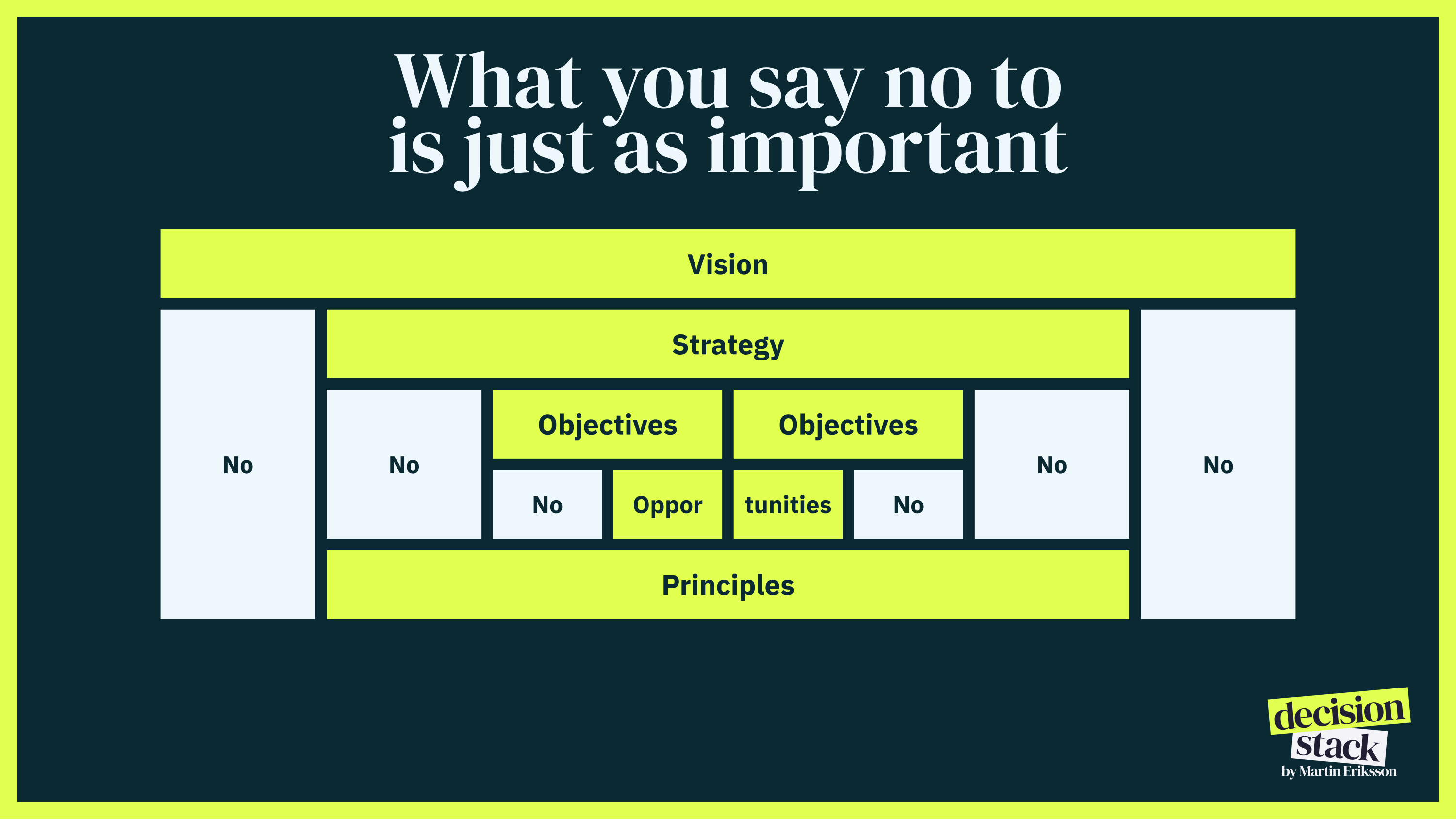
Strategy
“Tactics without strategy is the noise before defeat” – Sun Tzu, The Art of War
If your vision is an aspirational statement about the world you want to create; your strategy should describe the actions you’ll take to make that vision a reality. See how the Decision Stack is starting to come together already?
There are as many different takes on strategy as there are business school professors and CEOs. And that’s ok. But there is consensus at the core – which is why I like to lean on giants of strategy (because why try to reinvent the wheel?) like Michael Porter, Richard Rumelt:
- To be effective a strategy must first and foremost be completely honest about your current state – strengths and weaknesses
- Your business and product don’t exist in a vacuum – your strategy has to consider your competition and how you can differentiate yourself to them
- Strategy is about making choices based on those insights and taking action to overcome your challenges and capitalising on your opportunities.
Strategy focuses resources and attention on some objectives over others. As Richard Rumelt says “Strategy involves focus and, therefore, choice. […] Good strategy requires leaders who are willing and able to say no […]. Strategy is at least as much about what an organisation does not do as about what it does.”
Saying no to something doesn’t mean you will never do it – often in strategy the sequencing discussion is the most important. What is the most important action to take now – and what does that open up to do next?
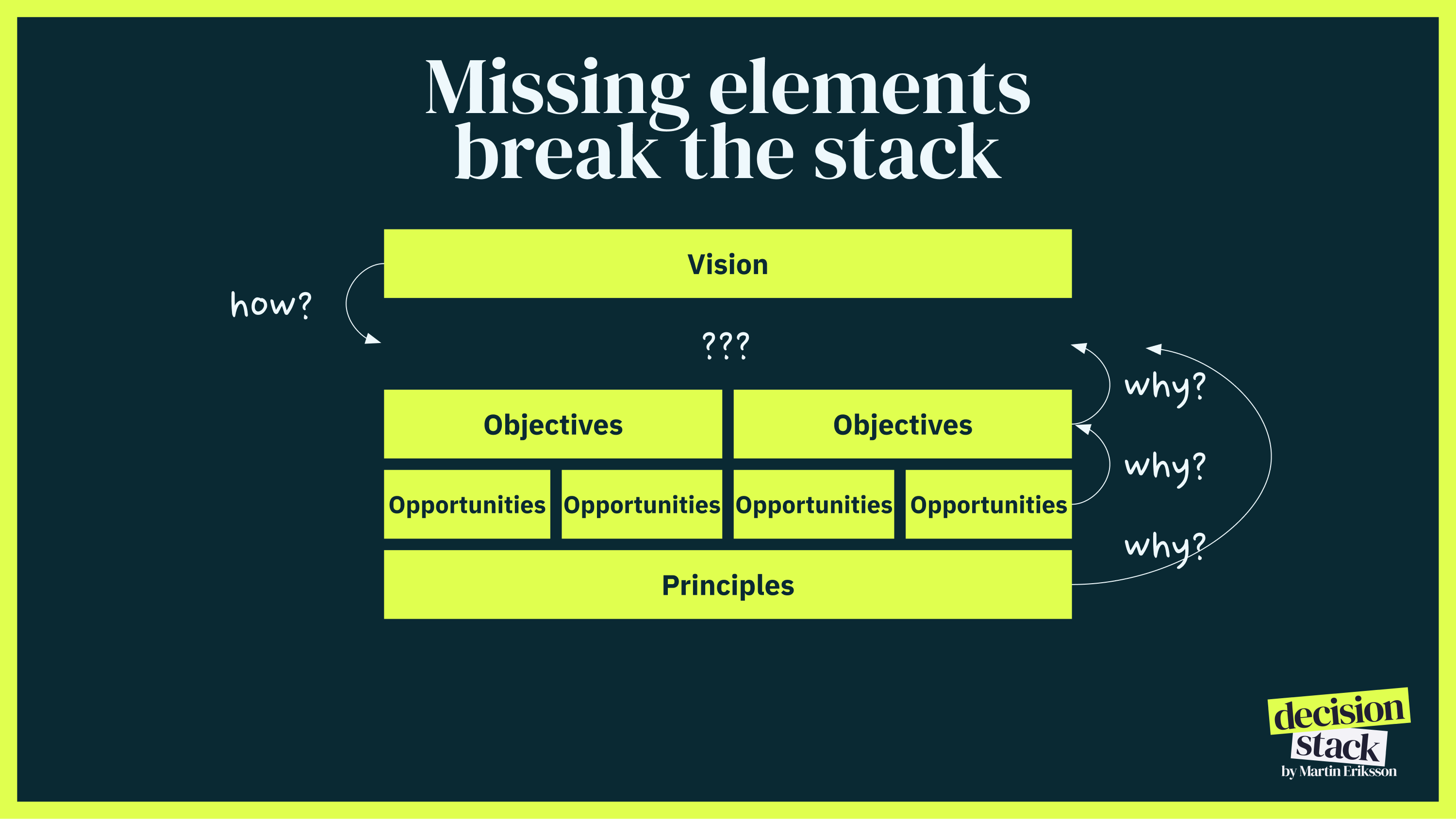
Objectives
“If you tell people where to go, but not how to get there – you will be amazed at the results” – George S. Patton
Now it’s time to translate that strategy into actionable objectives. How are you going to achieve that strategy?
Now you don’t have to use OKRs, but done well they’re incredibly powerful. To do them well, skip John Doerr and follow Christina Wodtke instead:
- Objectives are qualitative, translating your strategy into actions
- Key Results are measurable signs that the objective has been met
- Key Results must be outcomes, not outputs, because features, stories, bugs, or lines of code are all worthless if they don’t achieve an outcome
Still hate OKRs? That’s ok, you can use any framework that helps connect the dots from the Strategy above to actual outcomes your teams need to focus on achieving to deliver that strategy. Another great option is Narrative, Commitments, Tasks (NCT), a framework championed by Reforge.
As a startup person I like to work in 6-week sprints but if your product or business are more established quarterly cycles generally work best – just enough time to make progress, not so long that if you are on the wrong track you’ve wasted too much time before you course-correct. But whatever your cadence, review and discuss your progress towards your OKRs or NCTs every week – are you on track? Have you learned anything new that invalidates them? What’s working, what’s not working? And at the end of 6 weeks or quarter don’t think you have to throw out the OKRs or NCTs and write a whole new set either – they might still be the right objectives and you just need to update the key results.
This step in the Decision Stack is also where you start aligning your teams to your strategy. You should have one set of OKRs or NCTs for every team, and those should align with your strategy. This is easier said than done. Typical organisations will have teams set up around features or tech stacks, and if done well your strategy isn’t. Without veering off into an org design rabbit hole you do have to consider this carefully as you will see better results if your teams are aligned around distinct strategic objectives instead – bringing all the benefits of a clear Decision Stack, clear OKR/NCTs, and more.
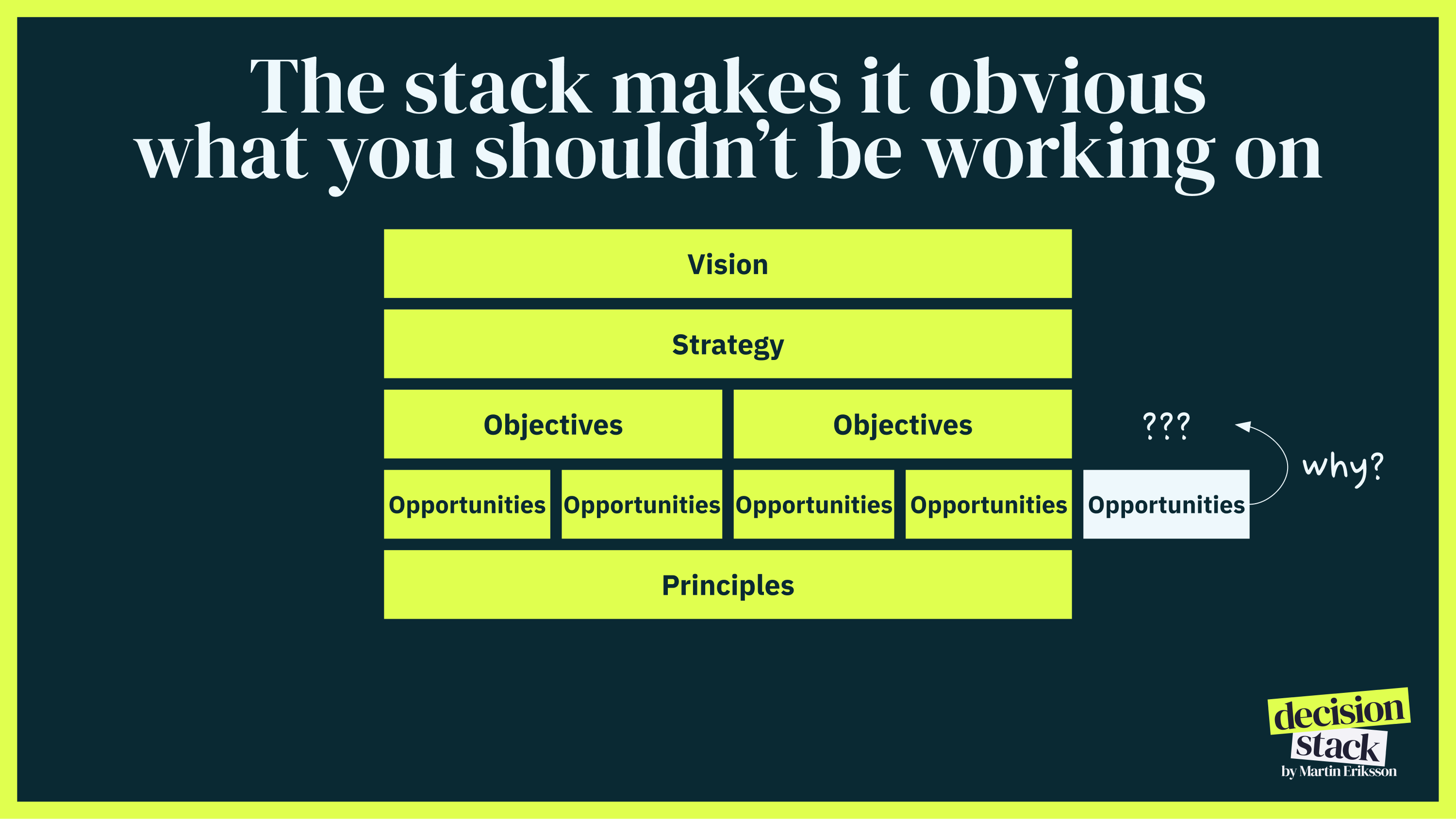
Opportunities
“If I had an hour to solve a problem I would spend 55 minutes first defining the problem and the last five minutes solving it.” – Einstein
Now the rubber meets the road, as we again ask how – how are we going to achieve those objectives? This is where it’s tempting to just start throwing ideas at the wall, maybe stack-ranking a bunch of features, publishing them as a roadmap and calling it a day. But not so fast. Resist the temptation to jump into solutions and instead focus on problems, or even better – opportunities. Take the objective above and start mapping out all the opportunities you have to impact that objective, which you’ll find in discovery, and you’ll quickly see that there are many more opportunities than you first thought. Only then should you move to considering solutions or features that deliver on those opportunities. Finally I strongly encourage you to map all of this using Teresa Torres’ Opportunity Solution Tree : “Mapping the opportunity space is how we give structure to the ill-structured problem of reaching our desired outcome.”
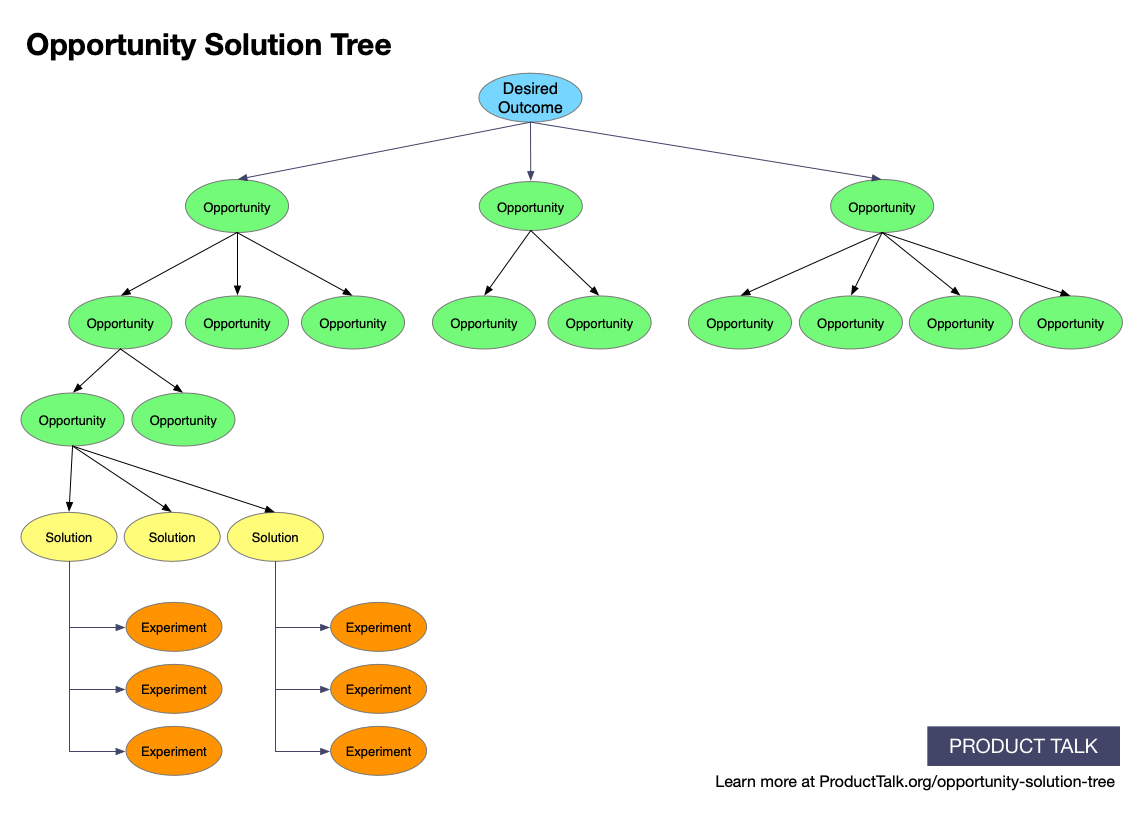
Principles
“It’s not hard to make decisions when you know what your principles are.” – Roy E. Disney
I learned this lesson very early on. My first ever job as a product manager was at Monster.com in 1999. As a job board, Monster is/was a two-sided marketplace with jobseekers using it for free to find jobs on one side, and recruiters paying to advertise to or access those jobseekers on the other. When I started we spent an inordinate amount of time at the beginning of every new feature or initiative debating whether that feature should be built in a jobseeker friendly way, or a recruiter friendly way. Over and over and over again. Until a few months after I joined when Jeff Taylor, the co-founder and CEO, simply said “The jobseeker always comes first – build an amazing experience for them and the recruiters will follow”. Not only did this brilliantly succinctly encapsulate the company strategy and set the groundwork for an aligned approach to branding, marketing, product, and sales, but suddenly those debates in product evaporated. We had our answer. The decision had been made. And it had been codified in such a way that it didn’t have to be debated again. Jobseekers always came first.
So (just like the rest of the Decision Stack) your principles have to be a reflection of your vision and strategy – and have to help answer the questions “How are we going to build this” and “Why are we building this” at the same time. This is also how you ensure that your principles are specific to your company and what you’re trying to do, not just the same generic values everyone talks about.
Principles take it one step further though, and crystallise the inherent trade-offs in any good strategy. A brilliant way to do this is to use even/over statements. Maybe like Monster you’re focused on jobseekers even over recruiters. Maybe you flip the two-sided marketplace on its head and say what Shopify says: merchants even over shoppers. Whatever best reflects your strategy.
The Decision Stack : Connecting the Dots
“So often people are working hard at the wrong thing. Working on the right thing is more important than working hard.” – Caterina Fake, Flickr
As an industry, we have been responsible for a lot of useless work. We have over-indexed on efficiency, delivery, and productivity, and not paid enough attention to what we should build in the first place. This mismatch compounds when we (rightly) start empowering our teams with more and more autonomy – they can all run faster, but are they running in the right direction for the business? Are they even running in the same direction?
This is why it’s so critical that your business has a Decision Stack in place – to provide a bounded context within which that autonomy can thrive, allowing your teams to run fast and in the right direction.
The Decision Stack connects the dots all the way from vision/mission through to every detailed decision. For leaders, this connects all the existing theories around vision, strategy, and execution – and how important all of them are to a cohesive approach. For everyone else in the team, this clarifies how their work connects to the bigger picture.
The Decision Stack is everyone’s responsibility, which is why it emphasises the power of questioning why from the bottom up and asking how from the top down. So whatever level you’re at – keep asking questions until your Decision Stack becomes clear. And keep answering those questions through good customer and product discovery.
The Decision Stack is how you capitalise on the promise of autonomous teams and help them make better decisions, faster.
